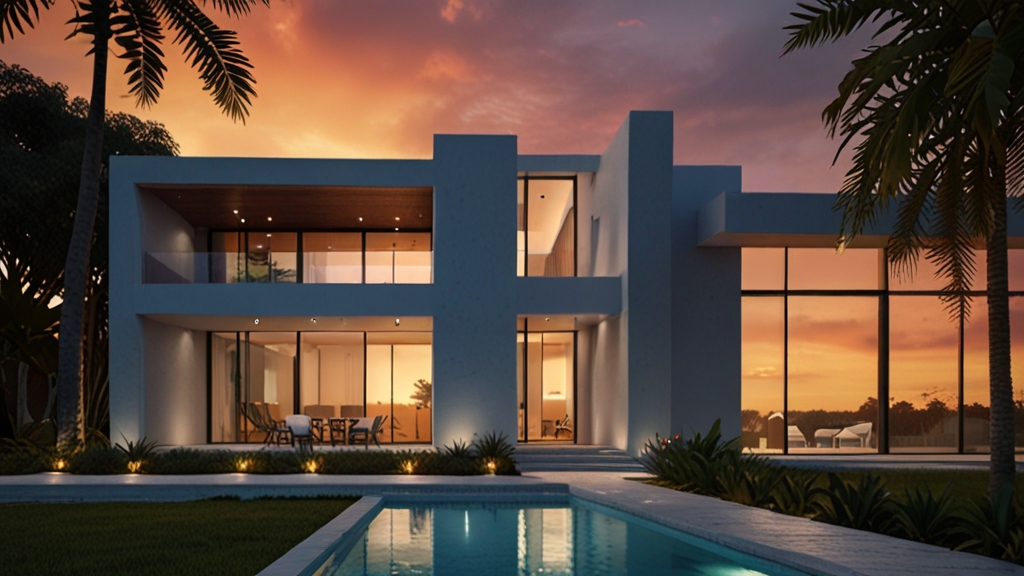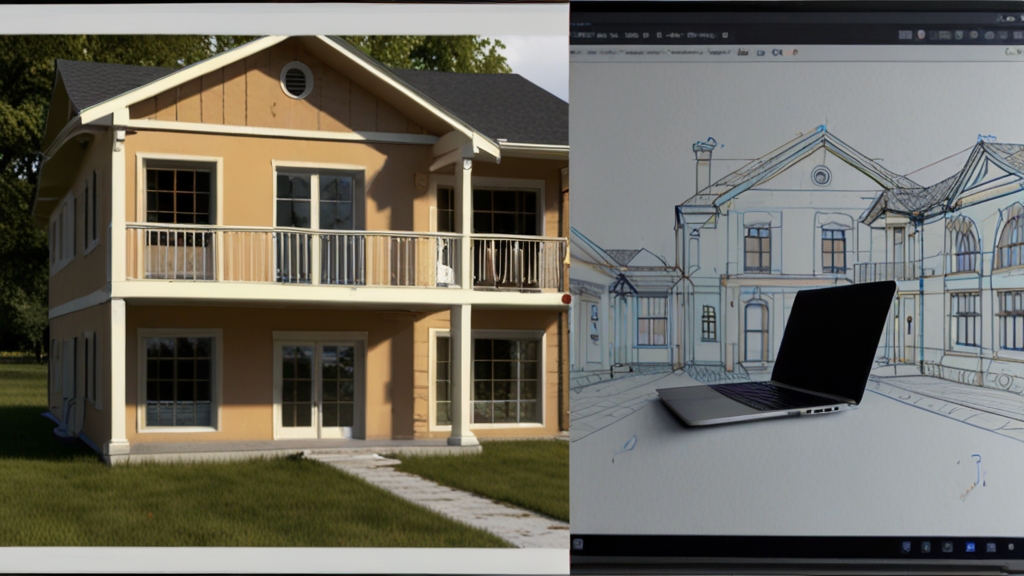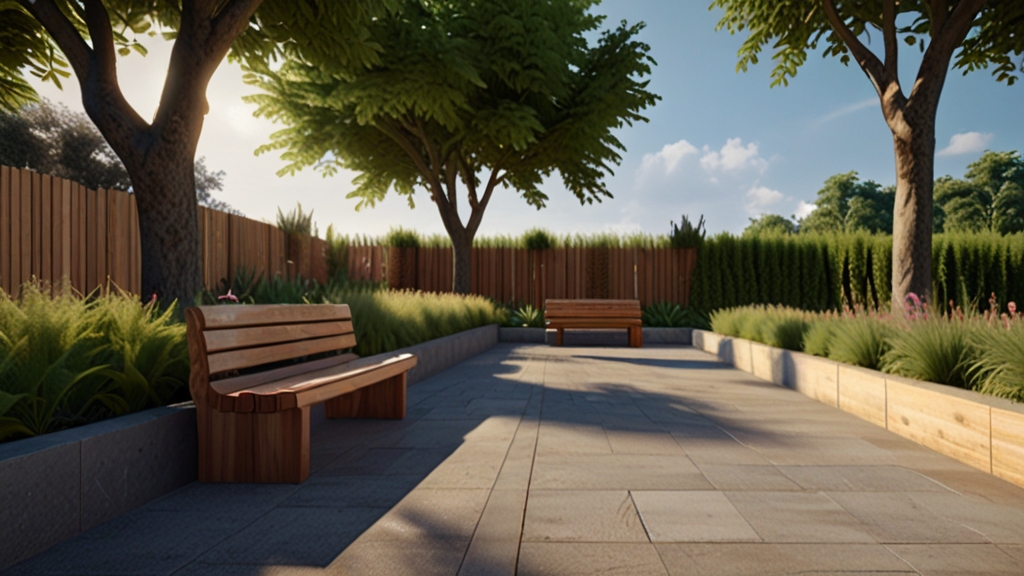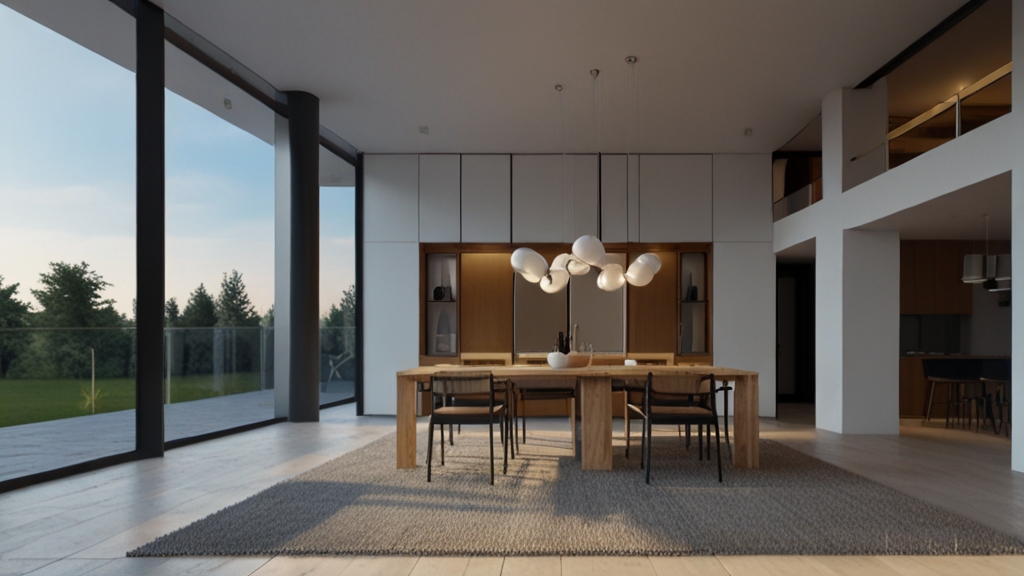In architectural visualization, the environment plays a fundamental role in creating realistic and convincing ambiances in renders of architectural projects. The environment includes elements such as vegetation, landscape, weather, and natural lighting, which contribute to contextualizing the design and providing a sense of authenticity to the render.
Vegetation and Landscape:
The integration of vegetation and landscape elements in the render’s environment adds life and naturalness to the project. Trees, shrubs, grass, and other green elements not only beautify the environment but also help create a sense of connection with nature and enhance the perception of space.
Weather and Atmospheric Conditions:
Weather and atmospheric conditions, such as sunlight, fog, or rain, have a significant impact on the atmosphere of the render and the perception of space. The realistic representation of these elements adds depth and drama to the render, creating an immersive and evocative atmosphere.
Natural Lighting:
Natural lighting is a key aspect of creating realistic ambiences in architectural renders. The way sunlight filters through trees or reflects on water can completely transform the appearance and atmosphere of the space, adding warmth and depth to the image.
Incorporation of Urban Details:
The inclusion of urban details, such as streets, sidewalks, vehicles, and people, in the render’s environment helps create a sense of life and activity in the project. These elements help contextualize the design within its urban environment and provide a sense of scale and proportion to the render.
In summary, the environment plays a crucial role in generating realistic ambiences in renders of architectural projects. By carefully integrating elements such as vegetation, weather, natural lighting, and urban details, designers can create compelling architectural visualizations that effectively convey the experience of space.
Español
Importancia del Entorno para Generar Ambientes Realistas en los Renders de Proyectos Arquitectónicos
En la visualización arquitectónica, el entorno desempeña un papel fundamental en la creación de ambientes realistas y convincentes en los renders de proyectos arquitectónicos. El entorno incluye elementos como la vegetación, el paisaje, el clima y la iluminación natural, que contribuyen a contextualizar el diseño y aportar una sensación de autenticidad al render.
Vegetación y Paisaje:
La integración de vegetación y elementos paisajísticos en el entorno del render añade vida y naturalidad al proyecto. Árboles, arbustos, césped y otros elementos verdes no solo embellecen el entorno, sino que también ayudan a crear una sensación de conexión con la naturaleza y a mejorar la percepción del espacio.
Clima y Condiciones Atmosféricas:
El clima y las condiciones atmosféricas, como la luz solar, la niebla o la lluvia, tienen un impacto significativo en la atmósfera del render y en la percepción del espacio. La representación realista de estos elementos añade profundidad y drama al render, creando un ambiente envolvente y evocador.
Iluminación Natural:
La iluminación natural es un aspecto clave para generar ambientes realistas en los renders arquitectónicos. La forma en que la luz del sol se filtra a través de los árboles o se refleja en el agua puede transformar por completo la apariencia y el ambiente del espacio, añadiendo calidez y profundidad a la imagen.
Incorporación de Detalles Urbanos:
La inclusión de detalles urbanos, como calles, aceras, vehículos y personas, en el entorno del render contribuye a crear una sensación de vida y actividad en el proyecto. Estos elementos ayudan a contextualizar el diseño dentro de su entorno urbano y aportan un sentido de escala y proporción al render.
En resumen, el entorno juega un papel crucial en la generación de ambientes realistas en los renders de proyectos arquitectónicos. Al integrar cuidadosamente elementos como la vegetación, el clima, la iluminación natural y los detalles urbanos, los diseñadores pueden crear visualizaciones arquitectónicas convincentes que transmiten de manera efectiva la experiencia del espacio.








